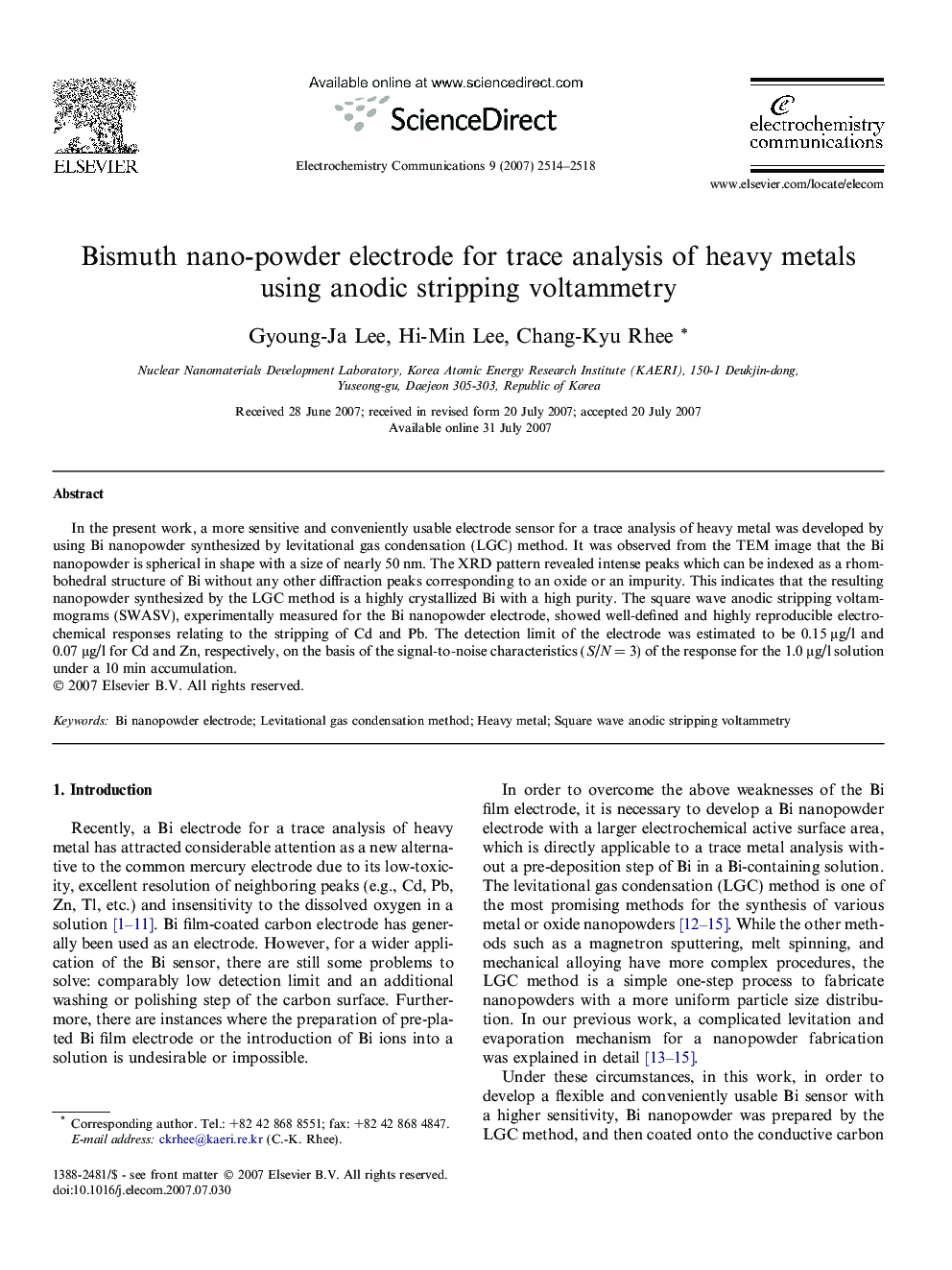| Article ID | Journal | Published Year | Pages | File Type |
|---|---|---|---|---|
| 182474 | Electrochemistry Communications | 2007 | 5 Pages |
In the present work, a more sensitive and conveniently usable electrode sensor for a trace analysis of heavy metal was developed by using Bi nanopowder synthesized by levitational gas condensation (LGC) method. It was observed from the TEM image that the Bi nanopowder is spherical in shape with a size of nearly 50 nm. The XRD pattern revealed intense peaks which can be indexed as a rhombohedral structure of Bi without any other diffraction peaks corresponding to an oxide or an impurity. This indicates that the resulting nanopowder synthesized by the LGC method is a highly crystallized Bi with a high purity. The square wave anodic stripping voltammograms (SWASV), experimentally measured for the Bi nanopowder electrode, showed well-defined and highly reproducible electrochemical responses relating to the stripping of Cd and Pb. The detection limit of the electrode was estimated to be 0.15 μg/l and 0.07 μg/l for Cd and Zn, respectively, on the basis of the signal-to-noise characteristics (S/N = 3) of the response for the 1.0 μg/l solution under a 10 min accumulation.
